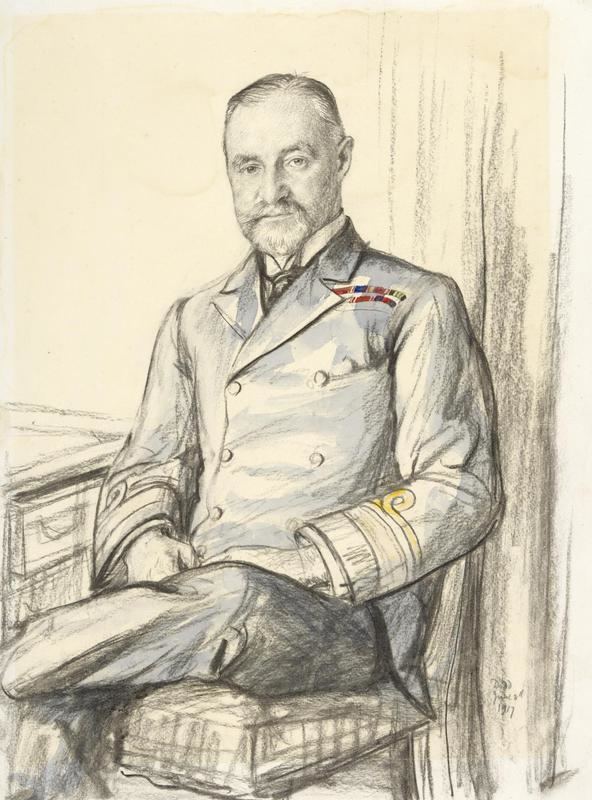Allegiance United Kingdom | Name Richard Phillimore Years of service 1878 - 1929 Rank Admiral | |
 | ||
Commands held HMS MohawkHMS JunoHMS AdoukirHMS Inflexible2nd Battle Cruiser Squadron1st Battle Cruiser SquadronReserve FleetPlymouth Command Battles/wars Boxer RebellionWorld War I Awards Order of the Bath, Order of St Michael and St George, Royal Victorian Order Battles and wars Boxer Rebellion, World War I | ||
Admiral Sir Richard Fortescue Phillimore (23 December 1864 – 8 November 1940) was a Royal Navy officer who went on to be Commander-in-Chief, Plymouth.
Contents

Naval career
Born the son of Admiral Sir Augustus Phillimore and educated at Westminster School, Phillimore joined the Royal Navy in 1878. He took part in the response to the Boxer Rebellion in 1900. He was given command of HMS Mohawk in 1903 and then led the Naval Brigade Machine Guns in Somaliland the next year. He was then given command of HMS Juno in 1907, HMS Aboukir in 1909 and the battlecruiser HMS Inflexible in 1911.
He served in World War I as Commander of the 2nd Battle Cruiser Squadron and then as Principal Beach Master for the landings at Cape Helles in the Dardanelles in April 1915. He went on to be liaison officer to the Imperial Russian Headquarters in 1915 and Commander of the 1st Battle Cruiser Squadron of the Grand Fleet in 1916. He was then made Admiral commanding the Aircraft of the Grand Fleet in 1917 and took part in Second Battle of Heligoland Bight in November 1917.
After the war, he was appointed President of the Postwar Questions Committee and then commanded the Reserve Fleet from 1920. He was made Commander-in-Chief, Plymouth in 1923. He was First and Principal Naval Aide-de-Camp to the King from 1928 and retired in 1929.
He is buried at Shedfield in Hampshire.
Family
In 1905 he married Violet Turton; they had three sons and one daughter.
